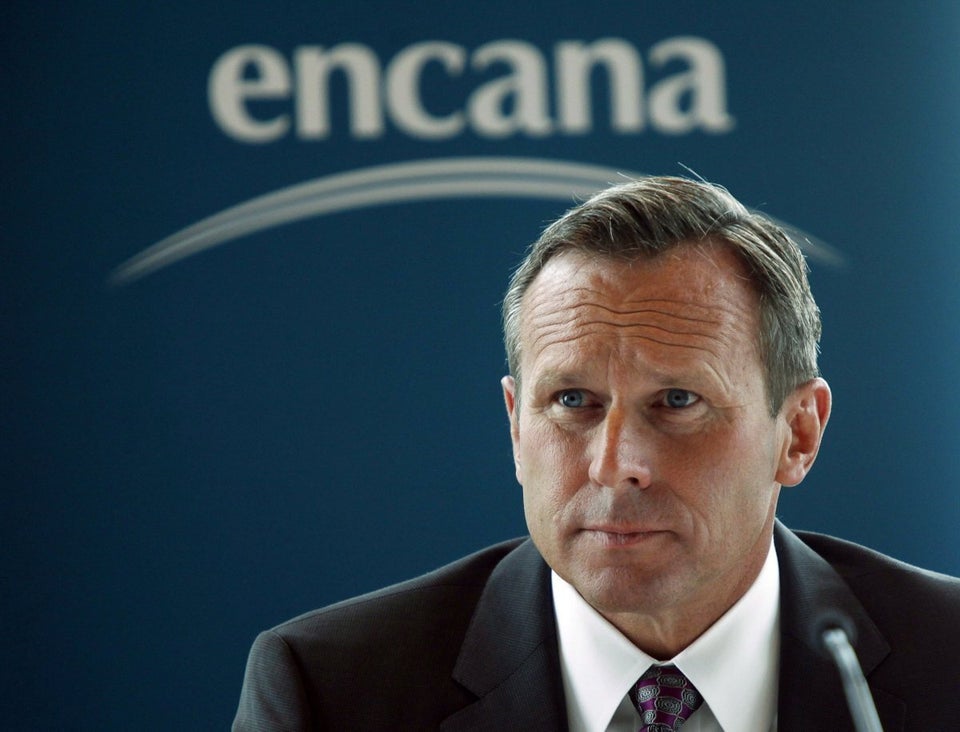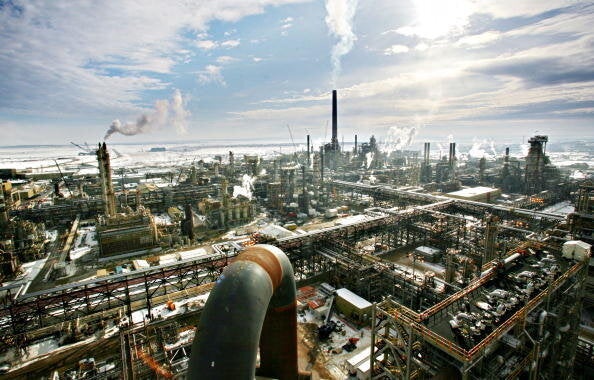
The United States will be a net exporter of natural gas by 2020, and will be almost entirely energy independent by 2035, according to a new report from the International Energy Agency that also calculated subsidies to the global fossil fuel industry to be worth $523 billion in 2011.
The forecast represents a major challenge to Canada’s oil and gas exporters, who will have to find new markets — presumably in Asia — should the U.S. no longer need to import fossil fuels.
The IEA is optimistic about that possibility, projecting that oilsands exports will nearly triple by 2035, to 4.3 million barrels per day from 1.6 million at present.
But the agency's forecast is based on the assumption Canada will find new markets for its oil. It says that time is rapidly approaching because “without new export capacity, western Canadian oil production would exceed regional consumption and current export capacity before 2016.”
The IEA report also noted that subsidies to fossil fuels were worth a total of $523 billion in 2011, a 30-per-cent jump over 2010. The agency said the increase was mainly due to a ramp-up in subsidies by Middle Eastern and north African countries.
Canada subsidizes its oil industry to the tune of nearly $3 billion annually. The U.S. oil industry gets about $7 billion in tax breaks annually, but estimates on total subsidies vary widely.
Critics argue the highly profitable industry needs no subsidies at all, but politicians and the industry say they help to keep local oil and gas industries competitive at the global level, and ensure creation of new jobs in the industry.
The government of Prime Minister Stephen Harper has said it plans to eliminate oil subsidies, but that hasn't transpired yet.
Thanks to hydraulic fracturing, or fracking, the U.S. has seen an explosion in oil and natural gas production in the past several years, with production growing to its highest level in 14 years earlier this year, at around 6 million barrels produced per day.
And by 2035, the U.S. will be the world’s largest oil producer, topping Saudi Arabia, which currently produces about 10 million barrels per day, the IEA projected.
That represents "a dramatic reversal of the trend seen in most other energy-importing countries," the Paris-based agency said in its report. "Energy developments in the United States are profound and their effect will be felt well beyond North America — and the energy sector."
Rebounding U.S. oil and gas production is "steadily changing the role of North America in global energy trade," the report stated.
However, the IEA’s numbers assume that fracking will become commonplace in the oil industry. That’s far from certain, given the political opposition to the practice.
With claims accumulating that fracking is causing health problems through potential pollution of the water table, and concerns being raised about the process potentially causing earthquakes, many jurisdictions are holding off on allowing the practice.
New York state is deliberating whether to continue a four-year-old moratorium on fracking. Quebec's Liberal government suspended extraction of shale oil last year, pending more data on the fracking process, and its new Parti Quebecois government has hinted at making the moratorium permanent.
Alternative extraction methods are changing the face of the global energy industry in unexpected ways.
While the U.S. is headed towards being the world’s biggest oil producer, the current holder of that crown, Saudi Arabia, may be headed in the other direction. A report from Citigroup earlier this year suggested that, with the country’s energy consumption growing at twice the rate of population growth, it could become a net importer of oil within 20 years.
For Canada, the return of U.S. oil production has meant that Canadian exporters are selling at a “discount rate” to the U.S., as demand for Canadian product falls. Reports indicate Canada is selling oil at $30 below the going rate for West Texas intermediate crude.
Faced with this reality, Canada’s government and its industries are looking to Asia for new markets. But that avenue is also fraught with risks, as environmentalists raise concerns about increased tanker traffic on the west coast, and about the pipelines needed to carry oil and gas there.
Canada continues to push the U.S. to approve the Keystone XL pipeline, a decision on which the Obama administration delayed last year to past the 2012 elections. Washington insiders suggest the State Department will likely give the project the go-ahead.
While the debate over Keystone has become a flashpoint between environmentalists and energy development proponents, it’s likely, given current projections, that the pipeline will be used not to send Canadian oil to U.S. markets, but to ship to U.S. ports for export overseas.
— With files from the Associated Press
Also on HuffPost

